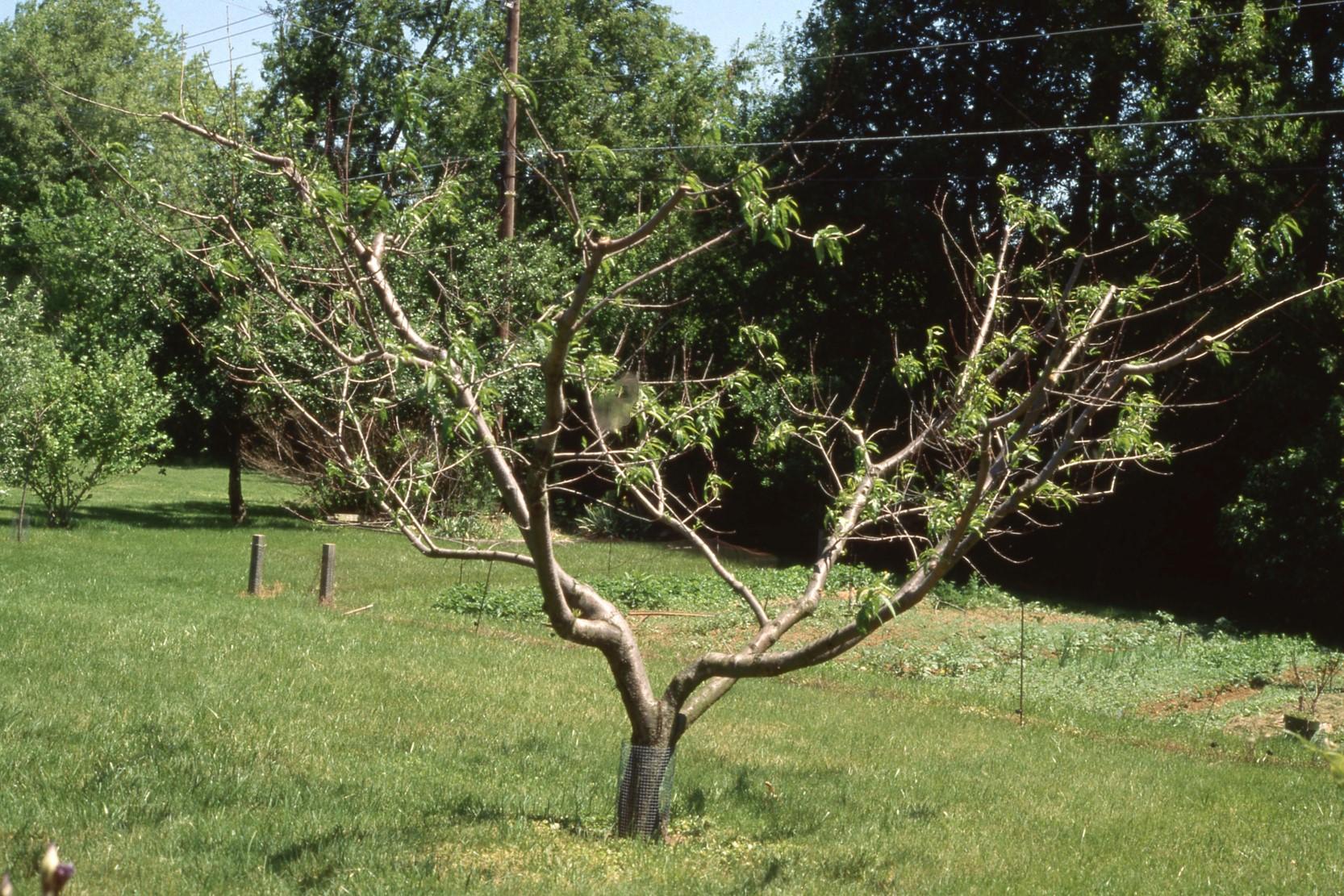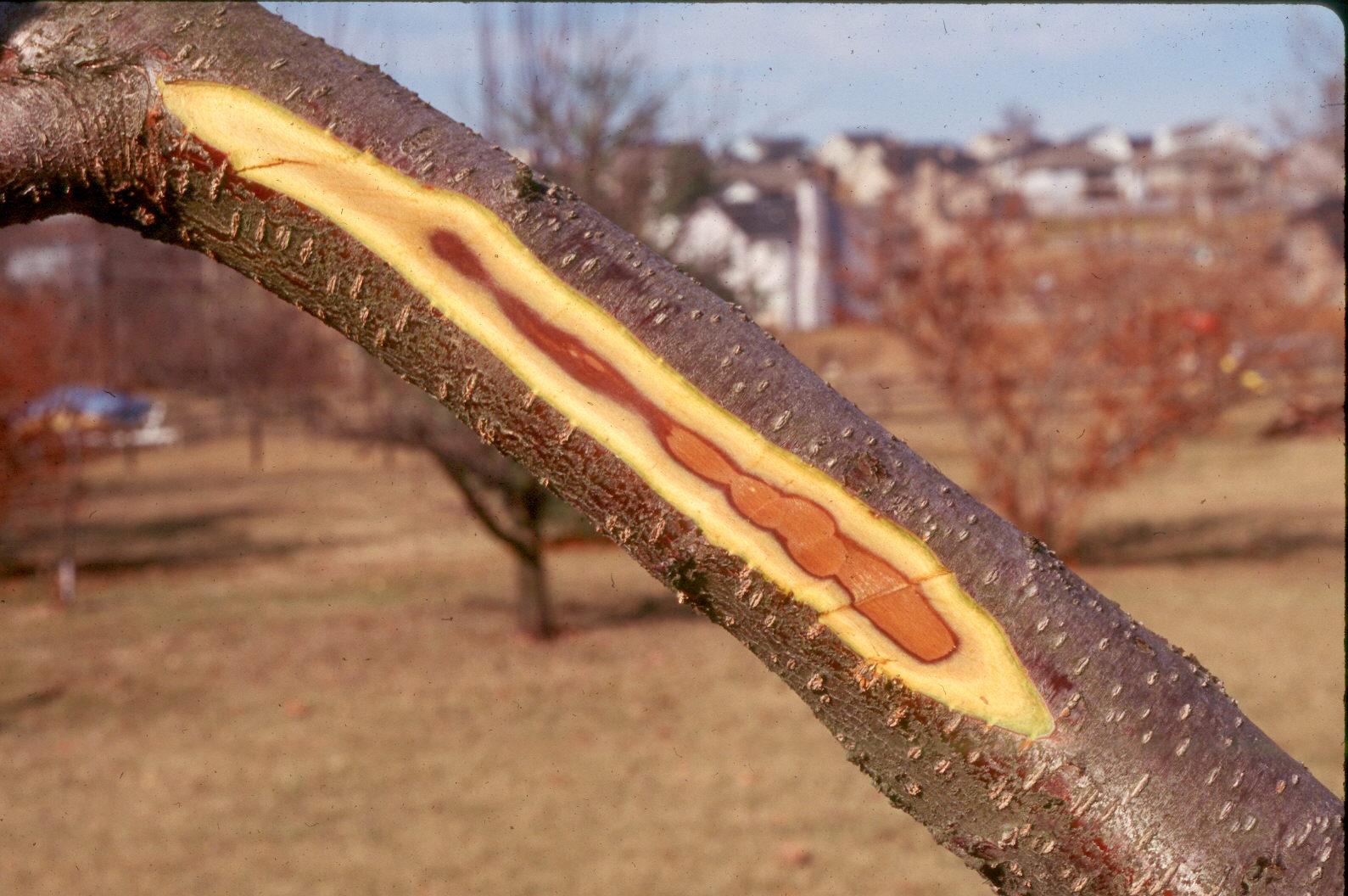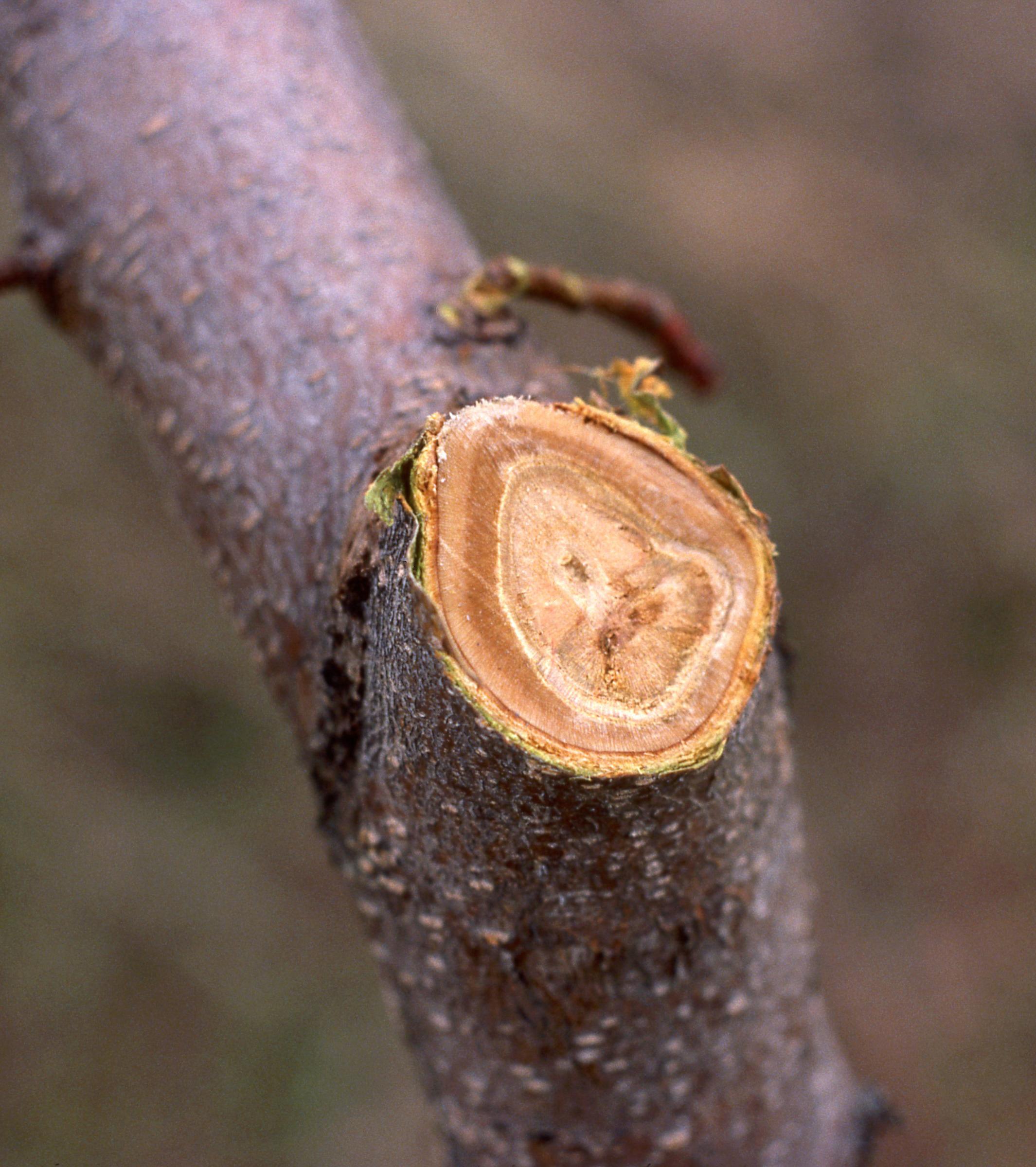Winter Injury to Trees (Blackheart) on Peach
Return to Abiotic Disorders
Winter injury (blackheart) results from freeze damage to the tree’s trunk and limb vascular tissue (xylem); damaged tissue turns dark brown or black. Trees recover readily from light to moderate levels of winter injury, although yields are normally reduced the following season. In severe cases, bark splitting may be visible and tree decline may occur. Scaffold limbs with old blackheart damage are often colonized by wood rot fungi, and limbs break as enlarging fruit puts more stress on limbs. Trees are predisposed to damage when they do not harden-off properly in autumn or during periods of extremely low winter temperatures.

Winter injured peach tree with dead branches and weak growth.
(Photo: John Strang, University of Kentucky)

Injury to xylem tissue.
(Photo: John Strang, University of Kentucky)

Cross section of branch showing xylem injury (blackheart).
(Photo: John Strang, University of Kentucky)
Management:
- Plant winter hardy cultivars and rootstocks.
- Avoid late-season nitrogen applications, which delay the development of winter hardiness.
- Prune trees after coldest winter temperatures have passed (generally March); however, young trees, which are more susceptible to cold injury, should be pruned in late March.
- If winter injury is suspected, wait until growth begins to evaluate the extent of injury.
- Lightly prune severely injured trees and apply nitrogen fertilizer to promote shoot growth.
